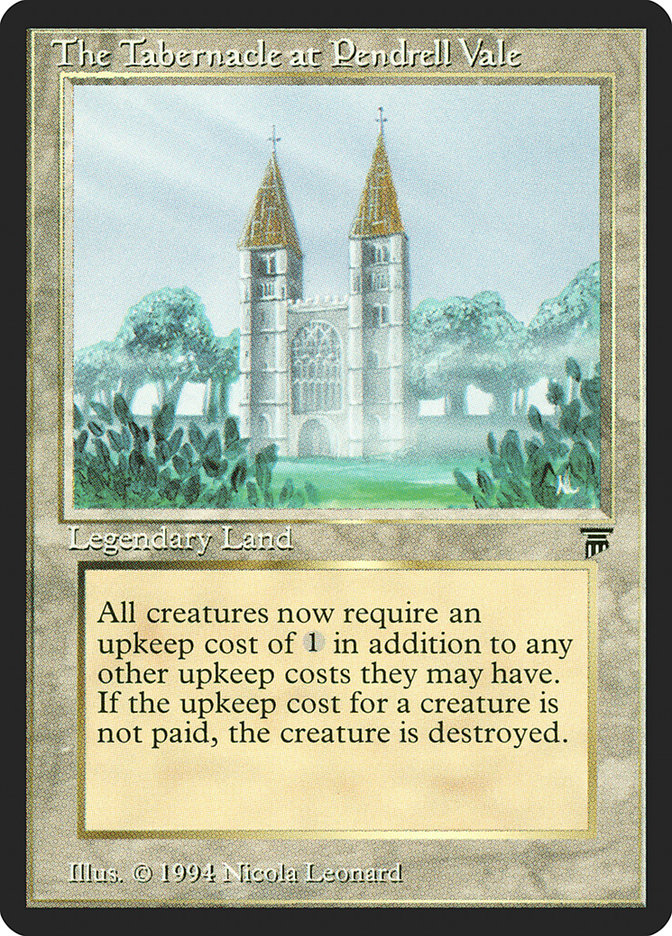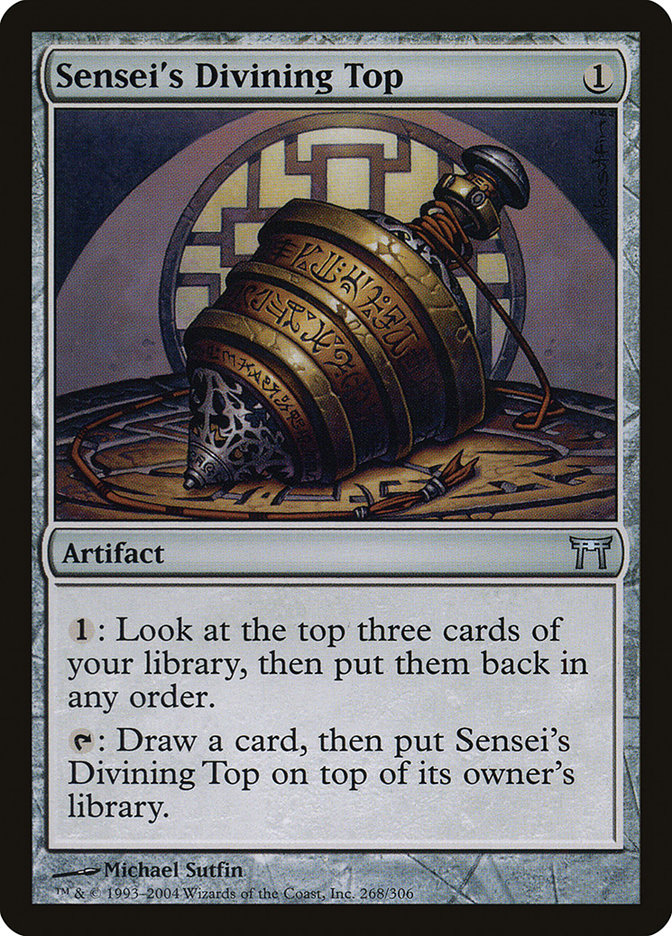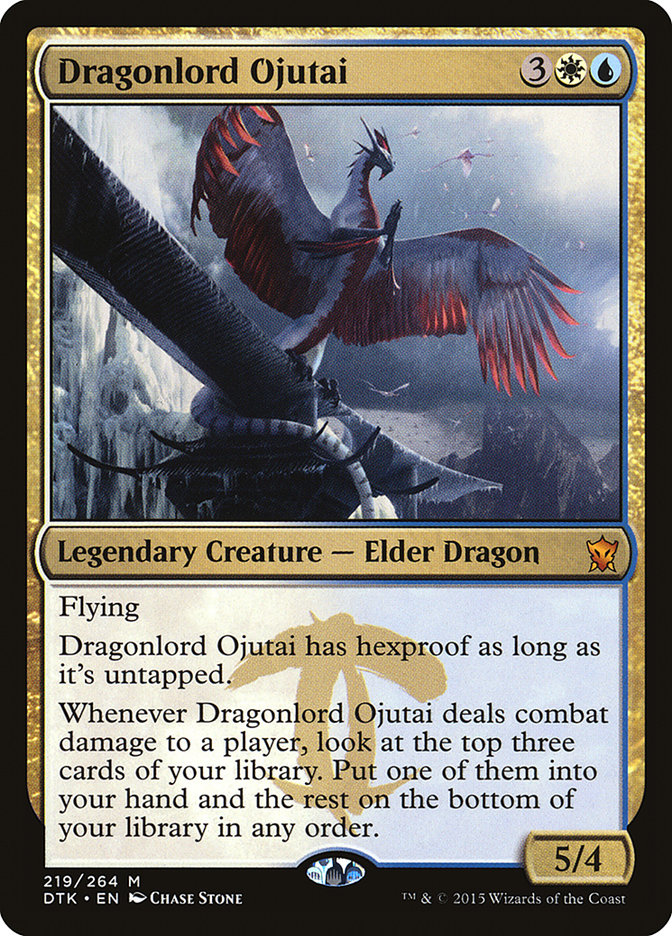Control is not easy to play. People have had the age old debate that was centered on the skill factor in playing control as opposed to aggro. Many of you
may be shocked to hear that I am part of the crowd that believes aggro is a beginner’s strategy and much easier to pilot than most control decks, but I’ll
save the philosophy article for another day, because today’s article is one that is a primer to playing control effectively within the fifty minutes
allotted per round.
When tournaments run long, we all know who to blame when looking around the room. In Standard, it isn’t as black and white when compared to Legacy, which
guarantees the culprits are using either forty+ lands or a copy of Sensei’s Divining Top. Standard is the format of the present and the future, so I’ll be
focusing on a few skills to cultivate in order to finish dealing lethal damage to an opponent prior to the final five turns being announced. This doesn’t
let the Lands strategy and Sensei’s Diving Top users off the hook, but we’ll save them for another day when I make my case for additional bannings in
Eternal formats due to time constraints.
Creatures (4)
Planeswalkers (3)
Lands (26)
Spells (27)

Why is control so tough to play? We all know that the decision trees for control players can become so complex that you can get lost in the sea of options.
The more options there are, the more mistakes are made, and that results in fewer wins in any given tournament. This is a major cause of concern for anyone
choosing what deck to battle with in a tournament that has significant rewards for a strong performance. Why play a deck that is more difficult to play and
doesn’t guarantee more success? The best answer I can provide is the power to control one’s destiny, which doesn’t exist in most other strategies. When
playing cards like Anticipate, Dig Through Time, Temples, and a lot of different removal, you have the power to sculpt your fate with every single tap of
your mana. Killing a creature too early, allowing threats to resolve because of untimely mana use, countering the wrong spells, allowing your life total to
get too low (or not low enough), and failure to play around specific cards in the metagame are just some of the pitfalls that exist in a control player’s
world. I admit that some of these aspects apply to the aggressive world too; however, I will not insult the intelligence of my readers with a primer for
playing Atarka Red.
Magic is a tough game…period. Limited, Constructed, Commander, Cube, or just casual play is all difficult to play to perfection. In order to move into the
category of proficient, however, control decks take some finesse, so let’s talk about the basics.
Teacher + Expensive Sorcery Master = A Guide to Control Playing
I recently started an online class with a few interested mages that want to up their control game. I’ve held multiple sessions through Skype, using Magic
Online as the “classroom” to test the skills of those being taught advanced Magic play. I have basically taken my trade as a teacher and used that skill to
craft a Magic curriculum that I follow through however many steps any particular student may need to go through for mastery. Each of the ten topics that I
developed has lessons and strategies to help improve and grow as a player in that specific area. The goal is to be able to actively use each skill to win
games of Magic, so the objective begins with the very phrase “I will be able to…”. Today I want to share with you the ten basic steps that I cover in the
class I conduct:
Shaheen Soorani’s Ten Steps to Improved Play (Focus on Control)
- I will be able to effectively analyze hand strength, sequence early plays, and make correct mulligan decisions.
- I will be able to effectively sequence land drops and construct the best optimal early to end game mana for multiple spell usage.
- I will be able to delegate my limited removal and countermagic to my opponent’s spells effectively.
- I will be able to decisively follow specific lines of play based on the matchup.
- I will be able to decisively adapt and alter lines of play based on the actions of my opponent.
- I will be able to predict my opponent’s plays and interactions with my spells effectively.
- I will be able to utilize my life total as a primary resource and win games doing so.
- I will be able to limit the amount of “small” play mistakes that lead to game losses.
- I will be able to recall mistakes made during a match, understand the correct line of play, and prevent recurrence of that mistake.
- I will be able to play a full match of Magic with a high level of sportsmanship and eliminate the use of excuses for a loss.
No step is more important than the other. Each of us has a weakness in one, two, or multiple areas that are covered by this set of ten. Maybe you are
unable to determine hand strength based on the matchup, or in game 1 when the matchup is unknown. Some of you may repeat similar mistakes match after match
and are either unaware of the error, or forget it once the crime has been committed. The best of the best fall victim to one of these mistakes in a match
here or there, which includes all-time greats like Paulo Vitor Damo da Rosa. PVDDR is a Hall of Famer, incredible Magic player and human being, but the
reason I’m picking on him is because the Pro Tour Dragons of Tarkir coverage is still fresh on my mind.
There was a play where he was destroying Craig Wescoe on camera (who was playing Bant Megamorph) and had a turn where he tapped out with Dragonlord Ojutai
in play. PVDDR had a Silumgar’s Scorn, but he was tapped out with the option of attacking with his Dragon. Craig had a mystery card in hand, but he was in
the deepest of troubles. If PVDDR waits, he can untap with his countermagic, easily prevent the possible removal spell from Craig, and lock the game up. I
watched as PVDDR turned his Dragon sideways, it fell to a Valorous Stance, and the game quickly slipped from the Hall of Famer’s fingertips. It wasn’t a
terrible play or a mistake of epic proportions, but it was one of the very few errors I’ve ever seen PVDDR make. The point of this story is that everyone
doesn’t play absolutely perfectly at all points, and if you realize the mistakes you have made and recall those, the chances of repeat performances are
low.
Magic skill builds on itself. Each of these steps, if mastered properly, can help increase your win percentage across the board. These may seem like common
sense to the most advanced players reading this, but I hope that many of you can read these and already know where you may need some improvement. I’ve
helped a nice group step their game up thus far, but I felt that this should be out there in print for the public to use as well. That said, let’s get into
the current Standard and the key skill I want to focus on today.
Enough with the Unintentional Draws!
Drawing in competitive play can feel inevitable. Some decks are slow, some players are slow, and when both are combined it creates a disastrous situation
that can only result in the match going to time. If memory serves correctly, I’ve had six total unintentional draws in Standard play over the last twelve
years of competitive Magic. I sat down, thought through my tournaments, and realized that drawing due to time elapsing is simply something I do not do. I
decided that the Magic community would benefit greatly from some tips to avoid drawing, and it ties directly to improving tournament results. When I’ve
drawn in tournaments over the years, it has typically occurred in the final rounds because I go through measures to ensure my matches don’t run long. Let’s
go through step by step:
Play faster.
When the match begins, players are much more inclined to take their time with each and every scry, spell selection in card draw, and even darting the eyes
back and forth from board, to hand, to opponent, and back to board. This is because there is a huge clock that reads 46:00+, and you naturally feel like
you have all the time in the world. When the clock continues to tick, you realize that the game is going much longer than anticipated. A touch of panic may
arise. That panic is great! The lack of panic or a general clock unawareness is what causes the average pair of players to go to time, especially
when playing slow decks. One of the biggest reasons why players are slow when piloting control early on is because of the implementation of the intricate
process that must be carried out perfectly to ensure victory. This process involves the steps mentioned above, which if one fumbles, they may find
themselves on the losing end of a match that could have been won.
However, do not confuse slow play with careful play. Staring at your one copy of Hero’s Downfall and Swamp in your hand is going to yield much less
advantage in the bluff department than you think. Always play the match, even game 1, at a pace that has a sense of urgency. If I start the game with a
Temple, I scry and pass as quickly as I can. If the decision is clear and relatively simple, don’t overplay it and just do it. This strategy goes out to
all players and is blind to skill. I always pick on my favorite people in the world, so my example will be Orrin Beasley. My main man Orrin has played well
in his career, top 8ing a couple GPs, but he has more unintentional draws because of his carefulness through a match. Playing faster has much more
advantage than disadvantage in the life of a control player especially. If Orrin or I played aggressive decks primarily, then we could take a few more
seconds on each turn to develop the best possible strategy. Game 1 with my take on Esper Control has to be played with haste against the control mirror. We
don’t have the luxury of time, and playing faster is something that all of us have to do, especially with Esper in Standard. The average game I’ve
witnessed when the two decks clash is easily past 30 minutes, which leaves less than 20 minutes to finish the match.
Make your opponents play faster.
This is the more uncomfortable step that must be taken in order to get through a tournament without unintentional draws. I’ve been told I’m a delight to
play against, which is important to me in tournament Magic. The tenth learning objective I mentioned has a focus on sportsmanship, and that directly refers
to how you interact with your opponent. The moment my opponent begins to play slow in the first game I mentioned, with 46:00+ left, I ask that he or she
pick up the pace of the game. I say it politely and almost apologetically, but I give the stern reminder that drawing is unacceptable. If my opponent
continues to take long turns that lead me to believe a draw is inevitable, I apologize and call a judge over to watch for slow play. This doesn’t mean I’m
impatient, tapping my foot, and demanding my opponent to complete his or her turn when a few tough decisions in a row have to be made. We all know what
slow play looks like and are often too polite to saw anything about it. Tournament Magic has spots for those who win and those who don’t. If you used some
of your hard earned cash to enter an Open Series event and your opponent’s pace of play is the reason for your elimination, it feels terrible. A player
shouldn’t be offended if you ask him or her politely to speed up their pace of play, especially when you’ve explained that draws would be bad for both
parties and called a judge to watch for slow play. I usually word it as: “Can you please watch us both for slow play?” and move on from there. There have
been instances where this has caused some discomfort in a match, but hopefully reasonable opponents will understand the necessity of the act and speed up
play then and in the future.
Lock it up.
When playing a deck like mine, you have full control over when you win. There are more aggressive lines that can be taken in order to lock the game up
quicker and move on to the next one. You could continue to remove creatures at a high life total, rebound Dig Through Time, kill another thing, Dig Through
Time again, play a Silumgar, the Drifting Death, and take your sweet time to finish. If you are playing against Abzan Aggro or Atarka Red, have at it, but
if you’re playing against Abzan Midrange or Jeskai Control, then you may want to end the dance early and move on to the after party. This is a big reason I
played Prognostic Sphinx in U/B Control prior to Dragons of Tarkir, dodged Elixir of Immortality-style control decks, and controlled an army of
planeswalkers whenever possible. I like to kill my opponents with expensive sorceries and flashy planeswalkers/creatures anyway, but they also help set up
for shorter matches. I take time into consideration when I build a Standard deck, and I suggest others to as well.
Practice makes perfect.
The more experienced you are with a control deck, the faster you’ll play it. There is nothing more intimidating than playing a control deck that you’re
unsure with against a powerful mage. Inexperience leads to mistakes and naturally slower play because of the unfamiliarity with card interactions. You’ll
have to think through things deeply, change your lines of play regularly, and sift through the complex decision tree that you’ve never had to consider
before. This causes you to frantically try to play well using all of your general knowledge of the game, and the stress can take its toll. The best way to
defeat these control demons is to play the deck regularly. Sleeve it up and crush some people at Friday Night Magic, build it on Magic Online, and play
game after game until it becomes instinct. Magic games differ from match to match, but scenarios tend to repeat more than people think. You’ll even start
to notice patterns with your opponents’ play and take full advantage of that. I’d like to think that my general lack of errors when on the big stage is
what it is due to the lifetime of repetition that I’ve gone through with the best archetype in the game. Combining the ten skills every control player must
master with the steps to prevent unintentional draws will help step up all of my fantastic readers’ win percentage.
Practice, build skill, and take down some tournaments, my friends!




